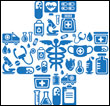Underwriters Laboratories (UL) Inc. is revising its standard for evaluating the safety of photovoltaic (PV) modules and panels. Because this revision will directly affect rooftop rack-mounted PV installations, you should be aware of the revisions taking place and their effects on these installations.
UL 1703
UL 1703, "Flat-Plate Photovoltaic Modules and Panels," is the basis for UL's evaluation of PV modules and panels. UL 1703 currently references UL 790, "Standard Test Methods for Fire Tests of Roof Coverings," for determining a panel's fire classification; UL 790 is the same test method used to determine roof assemblies' Class A, B and C fire classifications.
In 2008, the Solar America Board for Codes and Standards (Solar ABCs), a collaboration of PV industry stakeholders, identified PV module-specific fire research, testing and rating systems as high priorities. In subsequent research programs sponsored by Solar ABCs and funded by the Department of Energy, UL has conducted numerous fire tests of rooftop rack-mounted PV installation configurations.
The tests reveal a rooftop rack-mounted PV configuration's fire performance is noticeably different from classifications for individual PV panels and roof assemblies. Rooftop rack-mounted PV configurations exhibit significant flame spread potential. This likely is the result of the "chimney effect" created between the roof assembly and bottom side of PV panels, as well as the combustible nature of PV panel components.
Revisions
Based on the research conducted for Solar ABCs, UL is revising the fire test procedures in UL 1703. Instead of referencing UL 790, UL 1703's revision will include its own fire test procedures. Also, roof assemblies, PV racking methods and PV panels will be tested as combined assemblies with low-slope assemblies being tested separately from steep-slope assemblies.
For fire testing purposes, a reinforced, 60-mil-thick EPDM membrane on top of 4 inches of polyisocyanurate insulation will be representative of roof assemblies at slopes less than 3:12, which is considered low-slope. A three-tab, fiberglass-reinforced asphalt shingle on top of a No. 15 underlayment will be representative of steep-slope assemblies (slopes of 3:12 or greater).
Spread-of-flame testing currently is conducted with the leading edge of a PV panel in direct contact with the flame produced by the test apparatus. With UL 1703's revision, spread-of-flame testing will be conducted with the PV panel offset from the leading edge of the test specimen. With this change, the test apparatus' flame will not contact the PV module until the flame has spread across the roof assembly.
For steep-slope applications, a burning brand test also will be conducted with a Class A, B or C brand placed on top of the PV panel, and, if the space between the roof assembly and the bottom side of a PV panel is not enclosed, an additional burning brand test will be conducted within that space using a Class B brand. Burn-through to the roof deck is considered failure.
Roof assemblies, racking methods and PV panel assemblies that successfully pass these revised fire tests and UL 1703's other requirements will be granted a certification based on the specific low- or steep-slope configuration tested.
The changes to UL 1703 do not affect the fire classification of building-integrated PV (BIPV) components, such as thin-film PV components and PV shingles. Fire classification of BIPV will continue using UL 790.
NRCA's concerns
Solar ABCs' research reveals certain PV racking and panel assemblies exhibit significant flame spread potential far in excess of what is typical or considered acceptable with common roof assembly types. UL's revision of UL 1703 does not address this concern.
Also, in NRCA's opinion, UL's revision of UL 1703 results in fire-performance requirements for rooftop rack-mounted PV installations that are less stringent than current requirements. The panel offset configuration in spread-of-flame testing and burn-through to the roof deck criteria in burning brand testing are just two examples. Clearly, PV racking and panels not currently classified will be able to be classified under a revised version of UL 1703.
At this point, UL's revision of UL 1703 is not finalized nor has it been incorporated into current building or electrical codes. Until it is, NRCA recommends compliance with the current version of UL 1703 and code requirements. Additional information regarding rooftop PV installations, including how to comply with existing code requirements, is provided in NRCA Guidelines for Roof Systems With Photovoltaic Components. This document is available by accessing shop.nrca.net or contacting NRCA's Customer Service Department at (866) ASK-NRCA (275-6722).
Mark S. Graham is NRCA's associate executive director of technical services.



